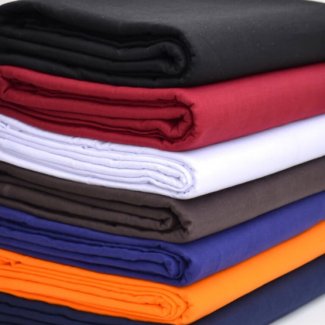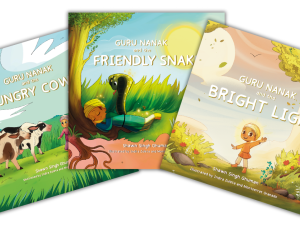Turban is Essential to Sikh Identity
The turban is essential wear for a Sikh, inherent to both traditional and modern-day Sikh Faith and identity. The Turban protects a Sikh’s long uncut hair, prevents tangling and protects from pollutants. Though the turban frees the Sikh from fussing over fashionable hair styles, Sikhs do wear a variety of formal and casual turban styles which distinguish them from turban wearing folk of other faiths. A Sikh is meant to never be without the turban, so a small turban may be worn, when casually eating or bathing. After work or play a fresh turban may be tied prior to evening worship.
Turban Tying is an Everyday Event
Tying a turban happens every day in the life of a Sikh, oftentimes twice. A turban is stretched out lengthwise and rolled or folded, and then wrapped around the head carefully so that it does not touch the floor during the process of tying. A joora, or top knot of hair is vital to the fundamental structure of any style Sikh turban, and may be secured by a Kanga, or wooden comb and a short length, or square of turban cloth.
Types of Turban Cloth and Styles
Turbans are available in many different styles, types of fabrics, and a wide variety of colors, are known by several different names, come in different lengths and widths, fabric weights, and are wrapped in a variety of styles. Various colors may be worn to reflect personal faith, to identify with a group, or simply to be fashionable. A longer turban, usually worn formally, may be color coordinated to the occasion. Popular traditional colors having religious significance are blue, white, orange, and black. Red and maroon are popularly worn for weddings. Patterned or tie-dyed turbans can be worn casually just for fun. A woman’s headscarf, or veil, is traditionally coordinated with whatever she is wearing and may be a solid color or contrasting colors. Many have decorative embroidery.
Turban Types and Styles
Turban is a generic English word used for any of the following types or specific style of Sikh head covering.
- Fifty: Half yard or meter strips tied beneath a turban, in contrasting or decorative colors.
- Rumal: Any square, rectangular, or triangular turban cloth worn as a head cover.
- Patka: A square of half to one yard or meter of any color, tied over the joora and secured to head with attached strings. Worn mostly by young children, for casual sports, or beneath a turban.
- Keski: Two yard or meter length of turban cloth often divided down the length to be half width used to secure the joora top knot, or worn for bathing and sleeping.
- Dastaar: A single width turban of four to six yards or meters of any color or design worn for casual or formal wear.
- Saafaa: Dupaata or double wide scarf, veil or shall wrapped around the head worn as a turban.
- Pagg, Pagri, Double Patti: Two same color turbans five to eight yards or meters stitched together lengthwise to double the width of the turban. The resulting double patti or double width turban may be of any color and is stretched from opposite end corners along the bias and then rolled inwards and folded before being tied in a distinct formal style having multiple folds all to one side.
- Do Mal, Dumalla: Two turbans wrapped and worn one over the other. The under turban is often white, but could be orange, or blue and is 4 to ten yards in length, and full or half width. The outer turban is nearly always blue and is generally 10 yards or meters in length and one third to half width. The Dumalla is a tall turban sometimes conical in shape, and sometimes, but not always, the turban is wrapped to show a contrasting under turban. The Dumalla may be embellished with steel or iron cable, an ornamental khanda symbol, weaponry such as short two, or three, inch kirpan tucked into folds, and a chakkar throwing ring, or beaded mala worn over the Dumalla.
Women’s Veil or Scarf
Most traditional styles of women’s garments include a color coordinating or contrasting length of cloth worn to cover the head, adorn the turban, or as an accessory.
- Chunni: A lightweight sheer, silky, solid color, single width fabric of two, or two and half yard or meter scarf or veil worn over the head or to adorn, turban, keski, or dastaar.
- Dupatta: a double wide fabric of any color or design embellished with embroidery or trim worn to cover head or adorn turban, keski or dastar.
Turban Cloth
Turbans also come in a variety of fabrics from lightweight to heavy such as:
- Mal Mal: A very lightweight fine fabric with an open weave.
- Rubia: A medium weight fabric having a dense weave
- Voile: A lightweight fabric with a close weave
- F74: A sheer lightweight closely woven fabric
Rock Your Turban & Walk Your Talk on Turban Day
Now that you have an understanding of various types, styles, and colors of Sikh turbans, if you don’t do so already, try using traditional terms. April 13th is a great time to celebrate Sikh identity, and learn a new turban style, or show pride in your own particular style by participating in an International Turban Day, or Vaisakhi Day event.
Top Photo Credit: Thanks to our SikhNet community for submitting these beautiful photos for International #TurbanDay








